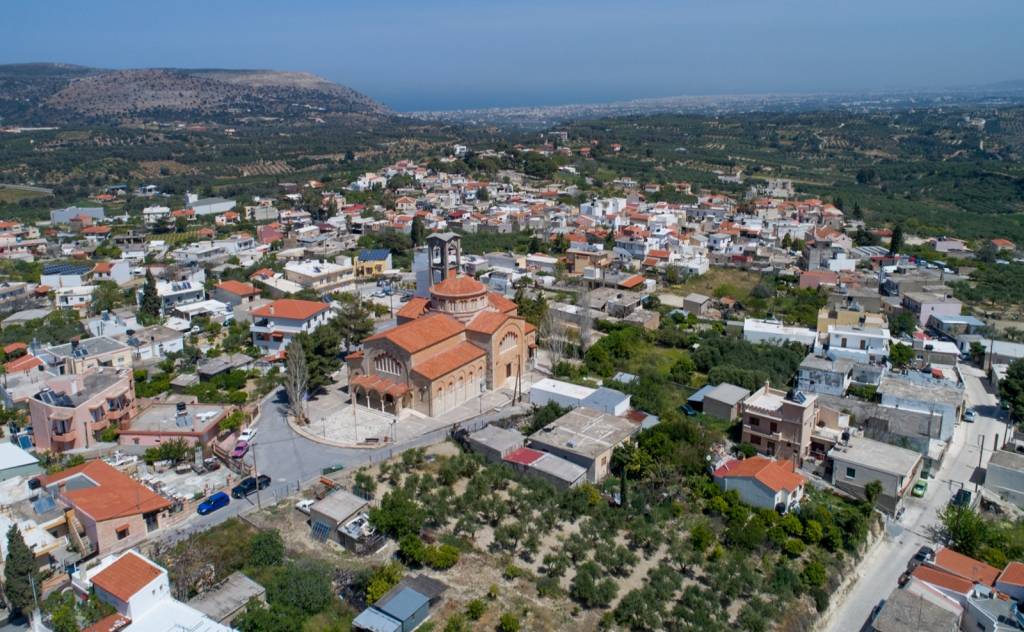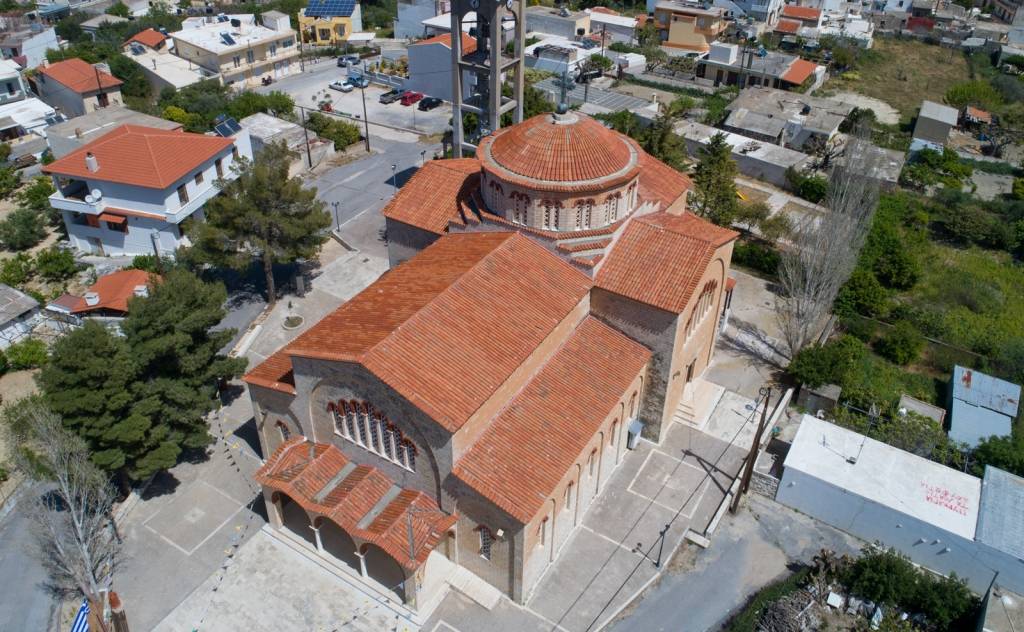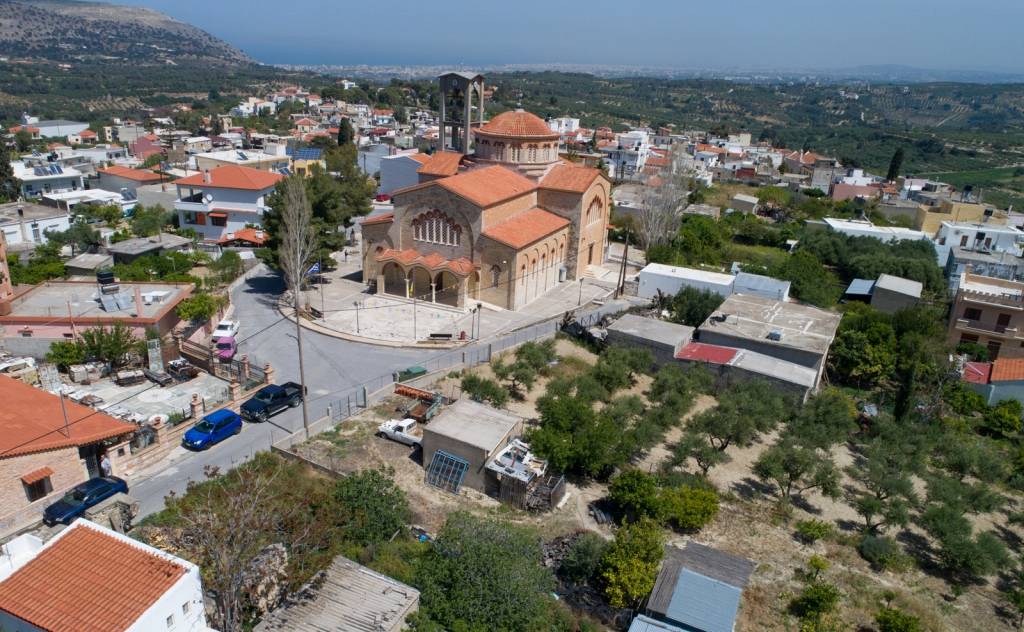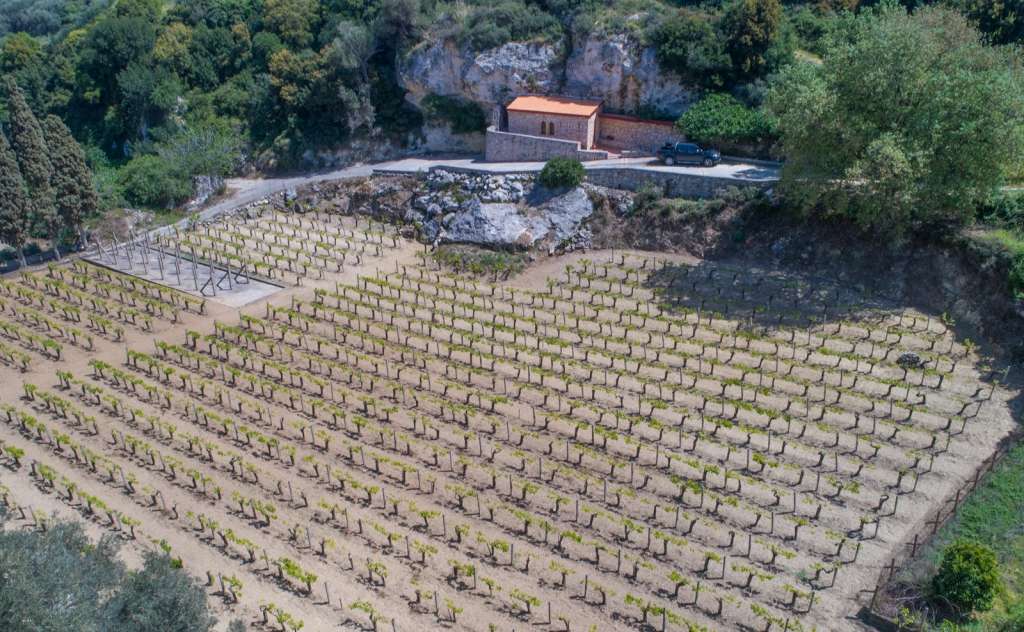







The sizeable traditional settlement of Tylissos is located in the eastern foothills of Psiloritis, in a valley overgrown with olive trees and vineyards. With 1085 permanent residents, the village is built at an altitude of 200 metres and is 14 kilometres from Heraklion.
The village has kept the same name for at least 3,400 years. From what was read on the signs of Linear B of Knossos (TU-RI-TO), it is the only place name still used today. Tylissos was first inhabited before 2000 BC. Its heyday was both the neo-palace (1650-1450 BC) and the next post-palace phase (1450-1200 BC). To the north of the village, the visitor can see the archaeological site of Tylissos. Here, the findings of an important, in wealth and extent, ancient Minoan city have been excavated. The first excavation was carried out in June 1912 by doctor and archaeologist Iosif Hatzidakis. Today, most of the findings are in the Archaeological Museum of Heraklion.
In the Venetian archives, the settlement is mentioned with numerous variations of the name Tylissos. In 1271, in a contract for the sale of wine, it was referred to as Tilise, while in a contract of 1301, as Dilisi. Also, in a document of the Ducal Archive of Chandakas of 1374, it is mentioned as Tilisso. Finally, in the census of Kastrofylakas, in 1583, it is mentioned as Telese, with 546 inhabitants.
The patron saint of the village is Agios Nikolaos. The church was built in the late 19th century and celebrates on December 6th. On this day, fried cod with garlic – potato sauce is served. In the old days, people collected sea urchins and went down to the village on mules to sell them. With the money they earned, they bought cod, the "shovel", as they called the piece they purchased. Because this process was carried out by the Tylissians systematically, the neighbouring villages gave them the nickname "codfish".
The village's oldest church is Christos (dedicated to the Transfiguration of the Savior), with surviving frescoes of the early 14th century. Other churches that can be seen are Agios Ioannis the Forerunner, Agios Georgios, the Assumption of the Virgin Mary (with traces of frescoes), the church of Agios Antonios etc. Of particular interest are the chapels of Agios Mamas, Panagia Kera, Panagia Loutra, Agios Antonios etc.
In the square of Tylissos, the visitors can see the restored Venetian fountain with the two arches and the two taps, while they can enjoy their coffee in the traditional cafes that are there. Most of them are renovated but still retain their original architectural form. In the centre of the village, there are two mansions of the early 20th century, which have been declared protected by the Ministry of Culture.
The Municipal Gallery of Malevizi "Botis Thalassinos", in a state-of-the-art building where permanent and periodic exhibitions are hosted, is housed in Tylissos. Among the permanent collections are the presentations of the late painter Botis Thalassinos' work, who donated 236 paintings from his rich work to the Municipal Gallery.
Finally, "Plaka" (stone slab) is located opposite the church of Agios Georgios. According to tradition, once, what is a stone slab now was a cultivable field. Its owner, who was a farmer, begged St. George to help him, for once, to finish ploughing and sowing so that he could go to church for his sake (on November 3rd, which is the celebration of St. George the Methistis). Indeed, the Saint helped him, and he was over with his work on time. The same thing was repeated for the next two years. In the fourth year, however, when the farmer begged the Saint for the same reason, not only did he not help him, but in order to punish him, he made his field barren, just like a stone slab.